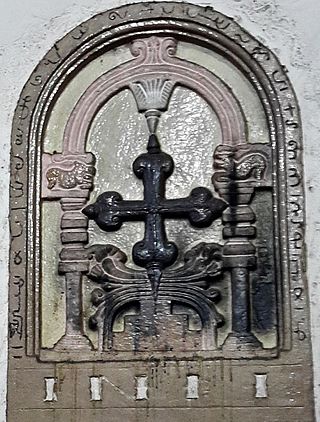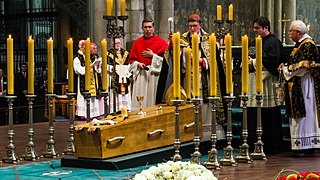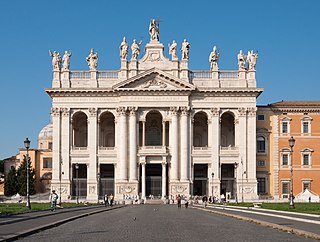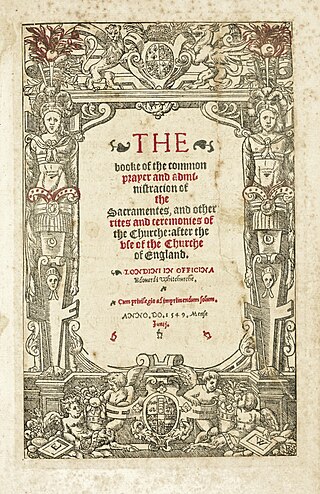
The seven deadly sins, also known as the capital vices or cardinal sins, is a grouping and classification of vices within Christian, particularly Catholic, teachings. According to the standard list, they are pride, greed, wrath, envy, lust, gluttony and sloth, which are contrary to the seven heavenly virtues.

Vanity is the excessive belief in one's own abilities or attractiveness to others. Prior to the 14th century, it did not have such narcissistic undertones, and merely meant futility. The related term vainglory is now often seen as an archaic synonym for vanity, but originally meant considering one's own capabilities and that God's help was not needed, i.e. unjustified boasting; although glory is now seen as having a predominantly positive meaning, the Latin term from which it derives, gloria, roughly means boasting, and was often used as a negative criticism.

Sloth is one of the seven deadly sins in Catholic teachings. It is the most difficult sin to define and credit as sin, since it refers to an assortment of ideas, dating from antiquity and including mental, spiritual, pathological, and conditional states. One definition is a habitual disinclination to exertion, or laziness. Views concerning the virtue of work to support society and further God's plan suggest that through inactivity, one invites sin: "For Satan finds some mischief still for idle hands to do.".

A mortal sin, in Christian theology, is a gravely sinful act which can lead to damnation if a person does not repent of the sin before death. It is alternatively called deadly, grave, and serious; the concept of mortal sin is found in both Catholicism and Lutheranism. A sin is considered to be "mortal" when its quality is such that it leads to a separation of that person from God's saving grace. Three conditions must together be met for a sin to be mortal: "Mortal sin is sin whose object is grave matter and which is also committed with full knowledge and deliberate consent." The sin against the Holy Spirit and the sins that cry to Heaven for vengeance are considered especially serious. This type of sin is distinguished from a venial sin in that the latter simply leads to a weakening of a person's relationship with God. Despite its gravity, a person can repent of having committed a mortal sin. Such repentance is the primary requisite for forgiveness and absolution.
Low Mass is a Tridentine Mass defined officially in the Code of Rubrics included in the 1962 edition of the Roman Missal as a Mass in which the priest does not chant the parts that the rubrics assign to him. A sung Mass celebrated with the assistance of sacred ministers is a High or Solemn Mass; without them it is a Missa Cantata.

José Ramón Miguel Agustín Pro Juárez, also known as Blessed Miguel Pro, SJ was a Mexican Jesuit priest executed under the presidency of Plutarco Elías Calles on the false charges of bombing and attempted assassination of former Mexican President Álvaro Obregón.

The Lettres provinciales are a series of eighteen letters written by French philosopher and theologian Blaise Pascal under the pseudonym Louis de Montalte. Written in the midst of the formulary controversy between the Jansenists and the Jesuits, they are a defense of the Jansenist Antoine Arnauld from Port-Royal-des-Champs, a friend of Pascal who in 1656 was condemned by the Faculté de Théologie at the Sorbonne in Paris for views that were claimed to be heretical. The first letter is dated January 23, 1656 and the eighteenth March 24, 1657. A fragmentary nineteenth letter is frequently included with the other eighteen.

The Seven Deadly Sins and the Four Last Things is a painting attributed to Hieronymus Bosch or to a follower of his, completed around 1500 or later. Since 1898 its authenticity has been questioned several times. In 2015 the Bosch Research Conservation Project claimed it to be by a follower, but scholars at the Prado, where the painting is on display in a sealed case, dismissed this argument. The painting is oil on wooden panels and is presented in a series of circular images.

The Coonan Cross Oath, also known as the Great Oath of Bent Cross, the Leaning Cross Oath or the Oath of the Slanting Cross, taken on 3 January 1653 in Mattancherry, was a public avowal by members of the Saint Thomas Christians of the Malabar region in India, that they would not submit to the Jesuits and Latin Catholic hierarchy, nor accept Portuguese dominance in ecclesiastical and secular life.

Rutilio Grande García, SJ was a Jesuit priest in El Salvador. He was assassinated in 1977, along with two other Salvadorans. He was the first priest assassinated before the Salvadoran Civil War started and a close friend of Archbishop Óscar Romero. After his death, Romero changed his silence and urged the military junta to investigate the murder. His beatification, through his status as a martyr, was approved by Pope Francis on 21 February 2020, with the ceremony being held on 22 January 2022.

Jacob Bidermann was born in the Austrian village of Ehingen, about 30 miles southwest of Ulm. He was a Jesuit priest and professor of theology, but is remembered mostly for his plays.
Walter Joseph Ciszek, S.J. was a Polish-American, Jesuit priest of the Russian Greek Catholic Church who clandestinely conducted missionary work in the Soviet Union between 1939 and 1963.

The Mass is the central liturgical service of the Eucharist in the Catholic Church, in which bread and wine are consecrated and become the body and blood of Christ. As defined by the Church at the Council of Trent, in the Mass "the same Christ who offered himself once in a bloody manner on the altar of the cross, is present and offered in an unbloody manner". The Church describes the Mass as the "source and summit of the Christian life", and teaches that the Mass is a sacrifice, in which the sacramental bread and wine, through consecration by an ordained priest, become the sacrificial body, blood, soul, and divinity of Christ as the sacrifice on Calvary made truly present once again on the altar. The Catholic Church permits only baptised members in the state of grace to receive Christ in the Eucharist.

Absolution of the dead is a prayer for or a declaration of absolution of a dead person's sins that takes place at the person's religious funeral.
In the late 1940s, in the United States, priests of the Roman Catholic Church performed a series of exorcisms on an anonymous boy, documented under the pseudonym "Roland Doe" or "Robbie Mannheim". The 14-year-old boy was alleged to be a victim of demonic possession, and the events were recorded by the attending priest, Raymond J. Bishop. Subsequent supernatural claims surrounding the events were used as elements in William Peter Blatty's 1971 novel The Exorcist. In December 2021, The Skeptical Inquirer reported the purported true identity of Roland Doe/Robbie Mannheim as Ronald Edwin Hunkeler.
Jesuit drama was a form of theatre practised in the colleges of the Society of Jesus between the 16th and 18th centuries, as a way of instructing students in rhetoric, assimilating Christian values and imparting Catholic doctrine.
Jacob Masen was a German Jesuit priest, historian, dramatist and theologian. He is known as a prolific writer in Latin.

The Latin Church is the largest autonomous particular church within the Catholic Church, whose members constitute the vast majority of the 1.3 billion Catholics. The Latin Church is one of 24 churches sui iuris in full communion with the pope; the other 23 are collectively referred to as the Eastern Catholic Churches, and have approximately 18 million members combined.
The following outline is provided as an overview of and topical guide to the Catholic Church:

The 1549 Book of Common Prayer (BCP) is the original version of the Book of Common Prayer, variations of which are still in use as the official liturgical book of the Church of England and other Anglican churches. Written during the English Reformation, the prayer book was largely the work of Thomas Cranmer, who borrowed from a large number of other sources. Evidence of Cranmer's Protestant theology can be seen throughout the book; however, the services maintain the traditional forms and sacramental language inherited from medieval Catholic liturgies. Criticised by Protestants for being too traditional, it was replaced by the significantly revised 1552 Book of Common Prayer.













